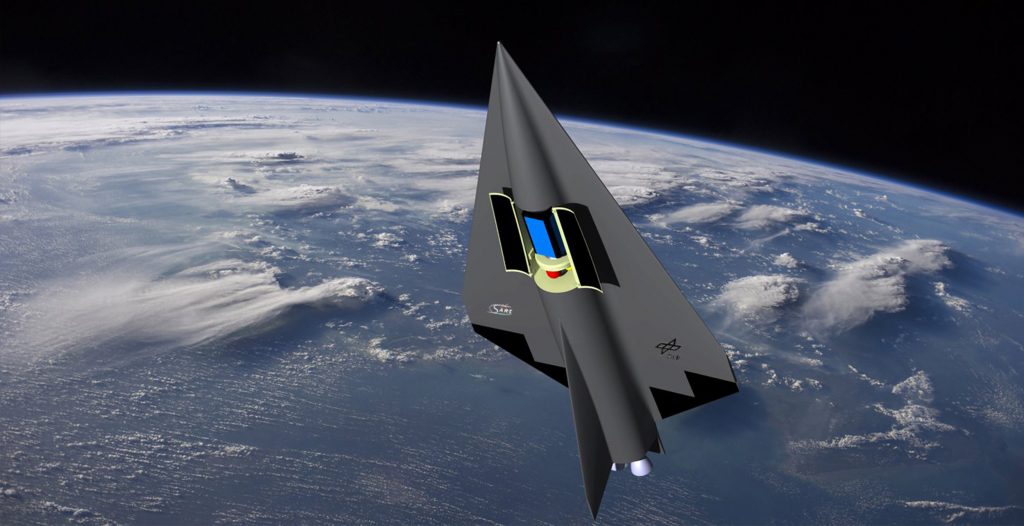Hypersonic transport
SpaceLiner is a vision for a suborbital, hypersonic winged passenger transporter that, in a variant with a payload bay, would also enable low-cost launching of satellites into orbit.
The two-stage, vertically launched confguration consisting of an uncrewed booster and a passenger stage (orbiter) is designed for 50 passengers and has a total of 11 liquid propellant rocket engines (booster nine, orbiter two), which are fuelled with cryogenic oxygen (LOX) and hydrogen (LH2). After main engine cut-off, the passenger stage glides over large intercontinental distances in a short time.
Depending on the passenger mission, flight altitudes of 80 kilometres and Mach numbers far exceeding 20 can be reached. With the SpaceLiner, flight times on the Australia-Europe route will be reduced to only 90 minutes, and shorter distances from Europe to California or East Asia will be around 60 minutes.
The SpaceLiner version for transporting satellites into orbit is almost identical in its external shape. The key difference is in the internal architecture of the upper stage, where the passenger cabin is replaced with a large, now centrally positioned payload bay. This version is envisaged as an uncrewed launch system. Due to the high degree of similarity between the two variants in terms of design and their use of identical rocket engines, considerable cost savings are possible both in development and in production. Combined with the fact that the stages are largely reusable, the ambitious goal of a more than 90 percent cost reduction for satellite launches relative to current levels is realistic.
German Aerospace Center (DLR)
Martin Sippel · E-Mail: martin.sippel@dlr.de · DLR.de/en
